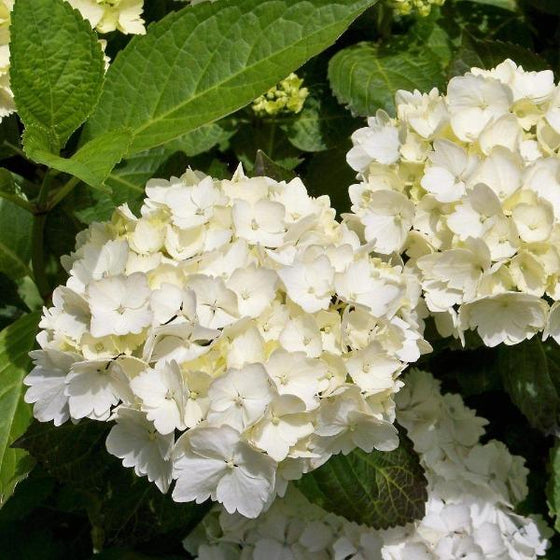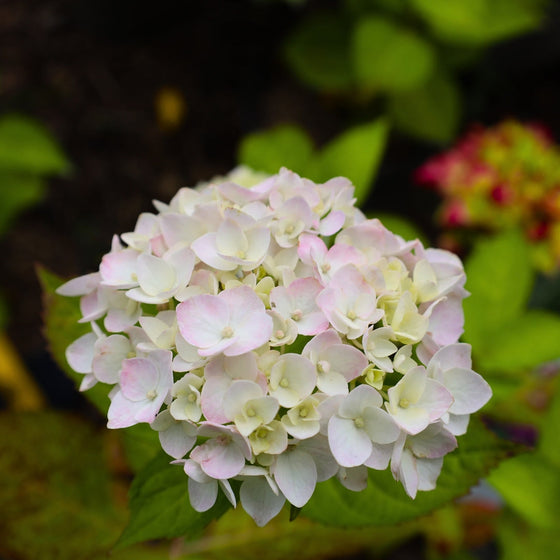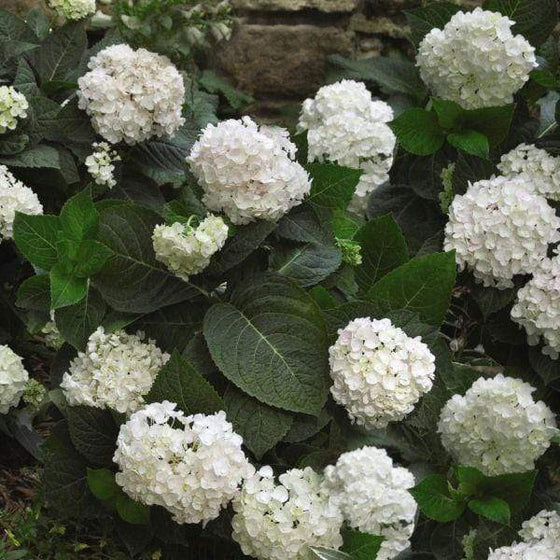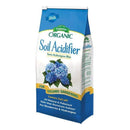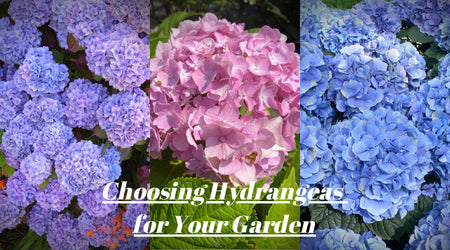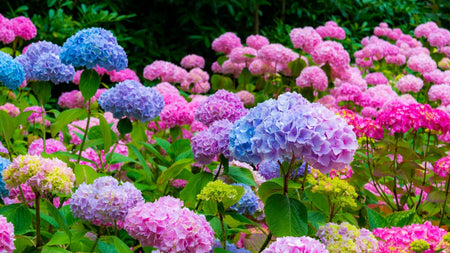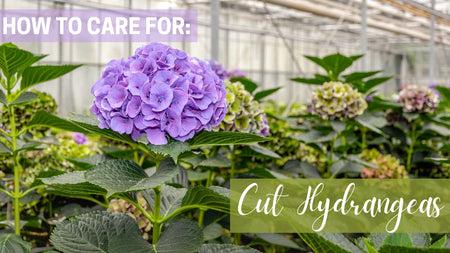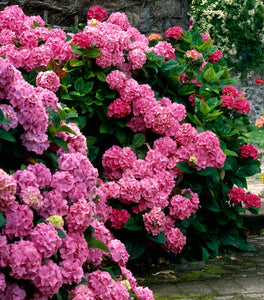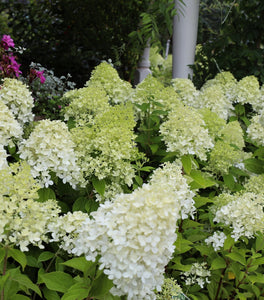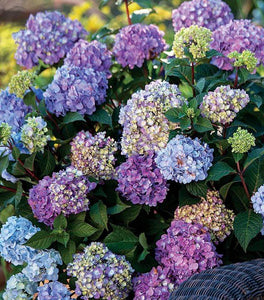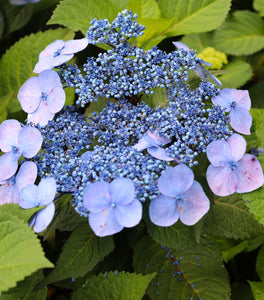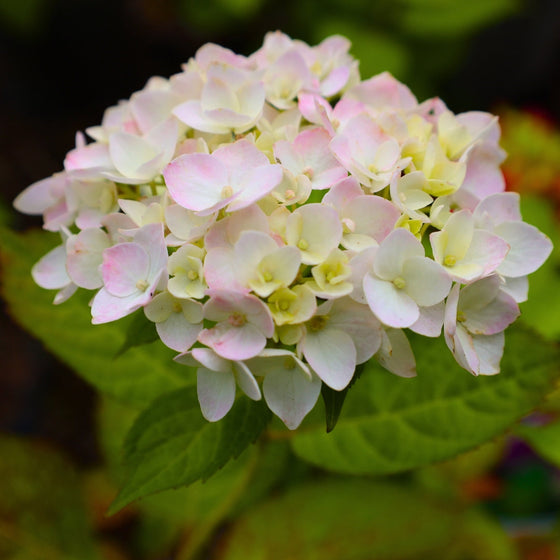
Images Depict Mature Plants
Endless Summer® Blushing Bride Hydrangea – Elegant White Reblooming Hydrangea that Blushes Pink or Blue
An elegant classic that never goes out of style.
The Blushing Bride Hydrangea (Hydrangea macrophylla ‘Blushing Bride’) is part of the award-winning Endless Summer® collection, beloved for its pure white flowers that gradually develop soft blush pink or pale blue tones. This reblooming hydrangea brings romance and charm to gardens from early summer through fall, with a continuous display of fresh, full mophead blooms.
Perfect for borders, beds, and bridal landscapes.
Growing 3 to 6 feet tall and wide, Blushing Bride fits beautifully in foundation plantings, mixed perennial beds, or elegant wedding-themed gardens. Its pristine blooms are a favorite for cut flower arrangements and fresh bouquets. The lush, green foliage and mounding form create a graceful backdrop for its ever-changing blooms, adding texture and depth to any garden design.
Dependable rebloomer with exceptional hardiness.
This variety thrives in USDA Zones 5–9, flowering on both old and new wood, which ensures you’ll see color even after a harsh winter or improper pruning. Blushing Bride adapts easily to full sun or partial shade and prefers rich, well-drained soil. With regular watering and seasonal feeding, it rewards gardeners with continuous, elegant blooms from spring to frost.
A hydrangea that blushes with beauty.
As its name suggests, Blushing Bride’s flowers evolve throughout the season—opening pure white before gently blushing with pale pink or blue hues, depending on your soil’s pH level. Its timeless beauty, combined with modern reblooming performance, makes it a must-have for any hydrangea lover’s collection.
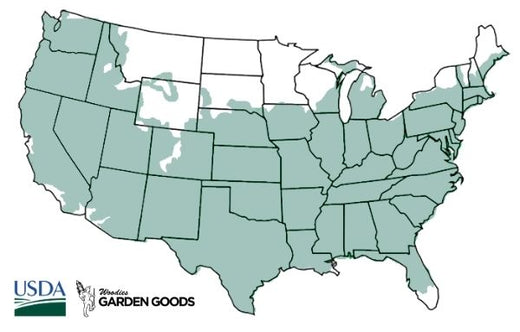
| Hardiness Zone: | 5-9 |
|---|---|
| Mature Height: | 3 to 6 Feet |
| Mature Width: | 3 to 6 Feet |
| Classification: | Broad leaved deciduous shrub, summer flowering |
| Sunlight: | Partial shade |
| Habit: | Upright, mounding |
| Foliage: | Dark green |
| Flower Color: | Pure White with pink highlights |
| Pruning Season: | Prune in late winter, flowers on new and old wood |
| Soil Condition: | Any well drained soil |
| Water Requirements: | Water well until established |
| Uses: | Extremely attractive when used as a focal point in the mixed border, mass planting, or a specimen planting |
How to Care for Blushing Bride Hydrangea
Be sure to read our planting instructions to ensure a healthy and happy Blushing Bride Hydrangea plant for years to come!
How do I plant an Endless Summer Blushing Bride Hydrangea?
Plant your Blushing Bride Hydrangea in well-drained, nutrient-rich soil that stays evenly moist. Choose a site with morning sun and afternoon shade to prevent leaf scorch. Dig a hole twice as wide as the root ball but no deeper. Position the shrub so the top of the root ball is level with the ground, backfill, and water thoroughly. Apply a 2–3 inch layer of mulch around the base to help conserve moisture and protect shallow roots.
How often should I water Blushing Bride Hydrangea?
Hydrangeas prefer consistently moist soil. Water deeply once or twice per week, especially during hot or dry periods. Avoid overhead watering to prevent fungal issues; instead, water at the base of the plant. Mulching around the root zone helps retain moisture, reduce stress, and support continuous blooming throughout the growing season.
When and how should I fertilize Blushing Bride Hydrangea?
Fertilize in early spring with a slow-release, balanced fertilizer (10-10-10 or 14-14-14). A light feeding after the first bloom can promote reblooming later in the summer. Avoid high-nitrogen fertilizers, which can reduce flower production. To enhance color, use aluminum sulfate for blue tones or garden lime for pink shades based on your soil’s pH.

When should I prune Blushing Bride Hydrangea?
Because Blushing Bride blooms on both old and new wood, minimal pruning is required. In late winter or early spring, remove only dead or weak stems to improve airflow. After the first bloom, you can deadhead spent flowers to encourage a second flush of blossoms. Avoid hard pruning, which can reduce early-season blooms.

